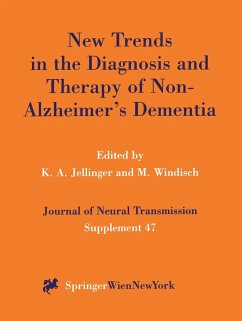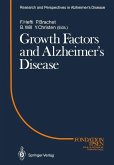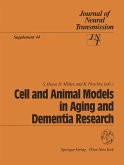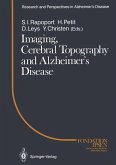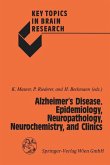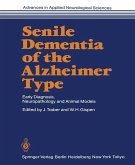This volume gives an overview of the present state of art on the classification, neuropathology, clinical presentation, neuropsychology, diagnosis, neuroimaging and therapeutic possibilities in non-Alzheimer's dementias, an increasingly important group of CNS diseases, which account for 7 to 30% of dementing disorders in adults and aged subjects, and thus, represent the second most frequent cause of dementia after Alzheimer's disease. The monograph provides the newest information for neurologists, psychiatrists, dementia research workers, dementia clinicians, neuropathologists, neurobiologists, and practicing physicians.
Dementia is an acquired disorder of higher cerebral functions and cognition. Because of increasing life expectancy dementia poses a major health and socio economic problem. Alzheimer's disease accounts for 70-90% of mental decline in the elderly. Degenerative non-Alzheimer's dementi as are responsi ble for 7-30%. These include a variety of disorders clinically characterised by progressive cognitive dysfunction often combined with focal neurological def icits, e.g. Parkinson-plus syndromes, Lewy body dementia, lobar and multisys tem atrophies, other neurodegenerative disorders, and prion diseases. Often it is difficult to distinguish these illnesses from Alzheimer's disease and vascu lar dementia. In spite of considerable progress in molecular genetics, biochemistry, and neuropathology, the classification and pathogenesis of non-Alzheimer's dementias are still debatable. Diagnosis is frequently made only at postmor tem. Because disease markers are not available for the majority ofnon Alzheimer's dementias, consensus criteria for the identification of such diseas es are warranted. These criteria could serve at a basis for early diagnosis and distinction from other dementing disorders.
Dementia is an acquired disorder of higher cerebral functions and cognition. Because of increasing life expectancy dementia poses a major health and socio economic problem. Alzheimer's disease accounts for 70-90% of mental decline in the elderly. Degenerative non-Alzheimer's dementi as are responsi ble for 7-30%. These include a variety of disorders clinically characterised by progressive cognitive dysfunction often combined with focal neurological def icits, e.g. Parkinson-plus syndromes, Lewy body dementia, lobar and multisys tem atrophies, other neurodegenerative disorders, and prion diseases. Often it is difficult to distinguish these illnesses from Alzheimer's disease and vascu lar dementia. In spite of considerable progress in molecular genetics, biochemistry, and neuropathology, the classification and pathogenesis of non-Alzheimer's dementias are still debatable. Diagnosis is frequently made only at postmor tem. Because disease markers are not available for the majority ofnon Alzheimer's dementias, consensus criteria for the identification of such diseas es are warranted. These criteria could serve at a basis for early diagnosis and distinction from other dementing disorders.

